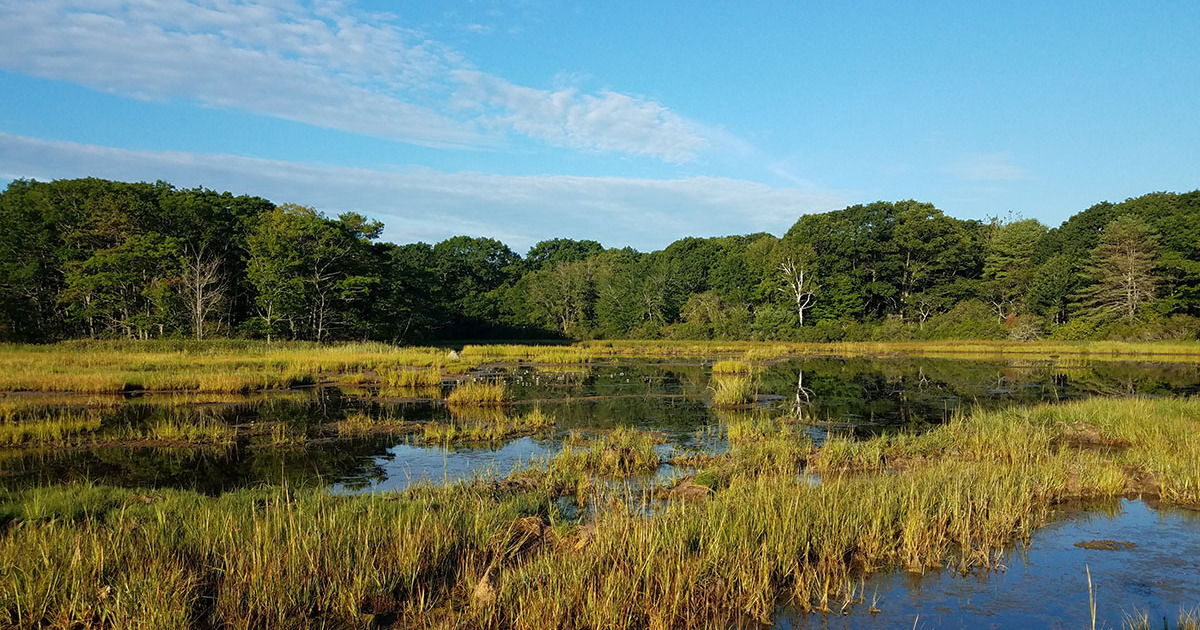Maine Project Aims to Protect Endangered Species, Sinking Coastal Salt Marsh
DU and the USFWS are partnering on a pair of innovative restoration initiatives that will create improved habitat for the imperiled saltmarsh sparrow
DU and the USFWS are partnering on a pair of innovative restoration initiatives that will create improved habitat for the imperiled saltmarsh sparrow

Ducks Unlimited (DU) and the U.S. Fish and Wildlife Service (USFWS) are working to reverse the trend of salt marsh loss at Rachel Carson National Wildlife Refuge, which protects over 5,700 acres of undeveloped land along the Atlantic coast of southern Maine.
This groundbreaking conservation project will use hand tools (shovels and spades) to dig shallow interconnected waterways known as runnels. This innovative low-cost, low-impact method addresses the effects of legacy salt hay farming and returns the natural ebb and flow of water to the marsh. That allows vegetation to grow and capture sediments, further elevating the surface of the marsh to a point where it can keep pace with continued sea-level rise.
Due to coastal development and the historical production of salt marsh hay, Maine has lost more than 20% of its salt marshes. With less than 22,000 acres of salt marsh remaining in the state, it’s imperative to safeguard and rebuild these native habitats, which are essential to wildlife health, protecting coastal communities from flooding and providing recreational opportunities.
The dramatic loss of marsh habitat in Maine has negatively impacted many species of wildlife, particularly the saltmarsh sparrow, recently placed on the state’s endangered species list in 2023.
“Our salt marshes are in trouble. Agricultural practices coupled with sea-level rise are causing the marshes to break apart,” said DU’s New England Biologist Bri Benvenuti, who previously worked for the USFWS at Rachel Carson for eight years. “When water becomes trapped on the marsh surface, the peat breaks down and causes the entire marsh to sink. For species like the saltmarsh sparrow that nest in the native grasses of the marsh, a few inches can be the difference between life or death.”
%20(1).jpg)
It's estimated there are only 1,600 saltmarsh sparrows left in Maine.
It’s estimated there are now less than 1,600 saltmarsh sparrows in Maine. To help support these endangered bird populations, DU and Rachel Carson staff will be restoring 125 acres of salt marsh in Wells. This work is funded by a $1 million North America Wetlands Conservation Act (NAWCA) grant, in partnership with the Trust for Public Lands.
Biologists will dig runnels, shallow channels that are less than 12 inches deep, and clear collapsed farming ditches to restore ebb and flow patterns. The strategic placement of runnels throughout degraded areas of the marsh will not only help regenerate the vegetation essential for the saltmarsh sparrow to nest, but also mitigate salt marsh loss caused by humans. Any peat excavated during this process will be hauled away in sleds and repurposed on the marsh.
The runnel work in Wells will begin in late October and is expected to be completed in one to two weeks. Additional restoration at a second marsh in Kennebunk, funded by the same NAWCA grant, is slated for November. Once finished, approximately 275 acres will be restored.
“This effort will address the historical exploitation of salt marshes for salt hay production while safeguarding the delicate habitat for the endangered saltmarsh sparrow, black ducks and other migratory birds,” Benvenuti said. “But this project helps more than birds. Our work will restore a vital ecosystem and strengthen community resilience in the face of climate change.”
Ducks Unlimited uses cookies to enhance your browsing experience, optimize site functionality, analyze traffic, and deliver personalized advertising through third parties. By continuing to use this site, you agree to our use of cookies. View Privacy Policy